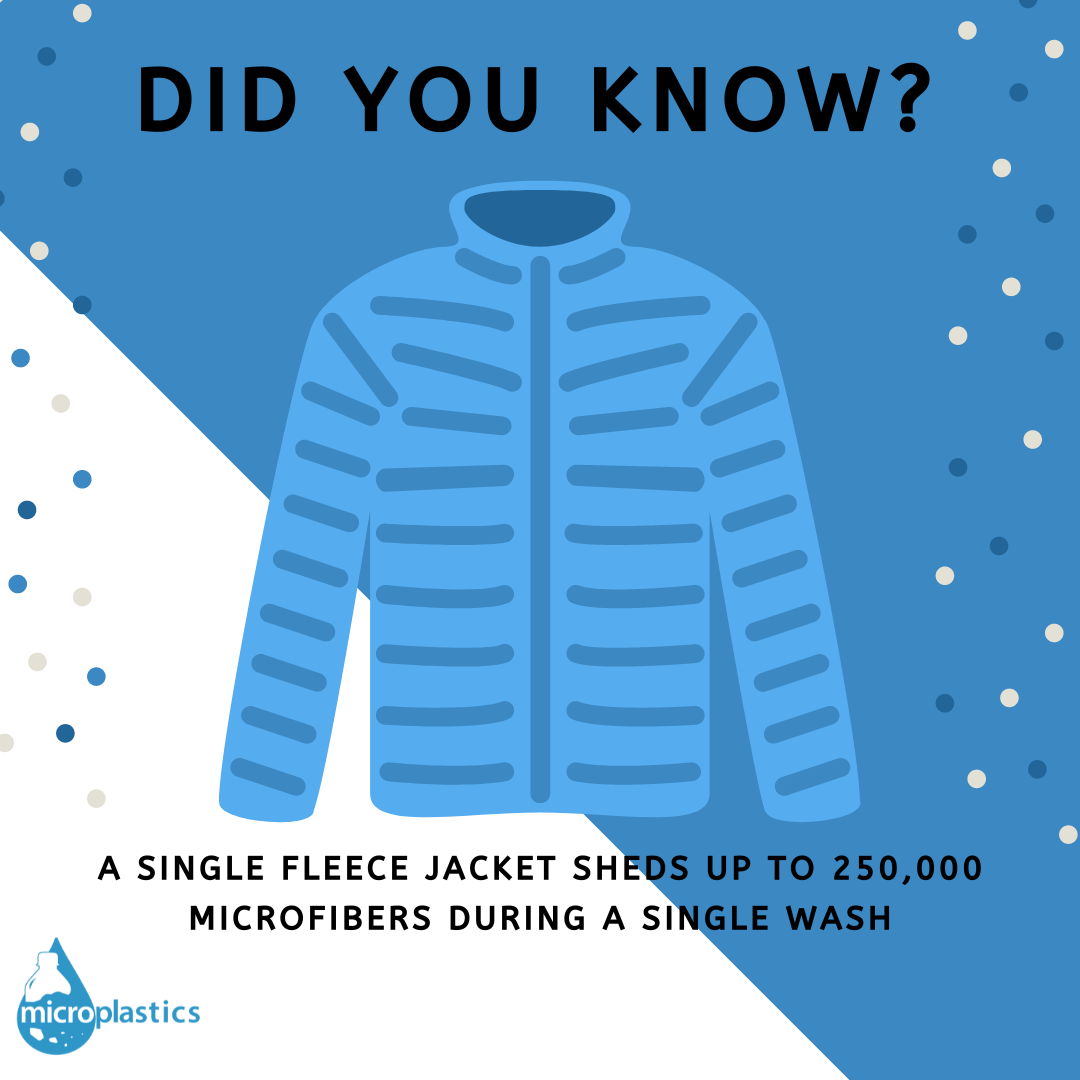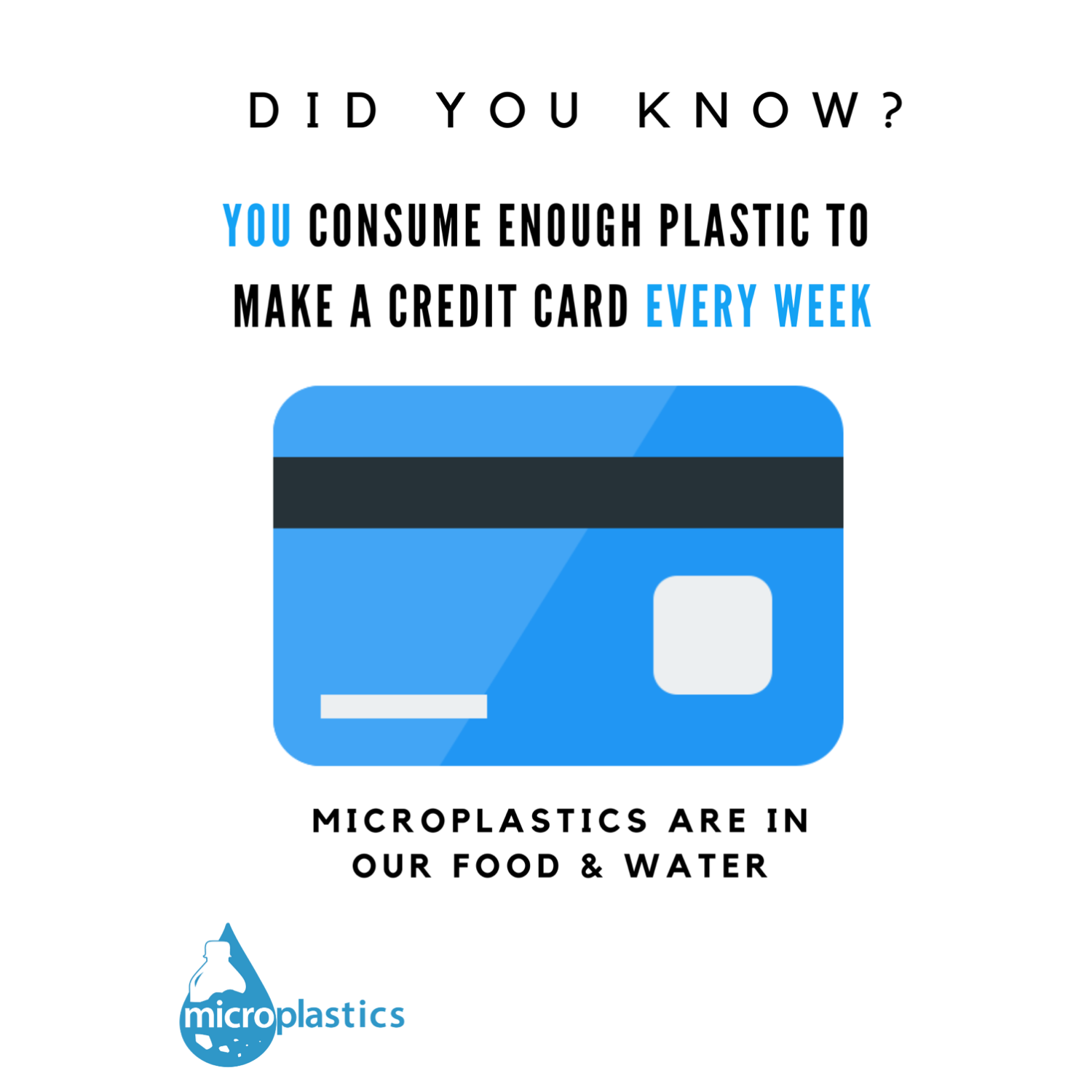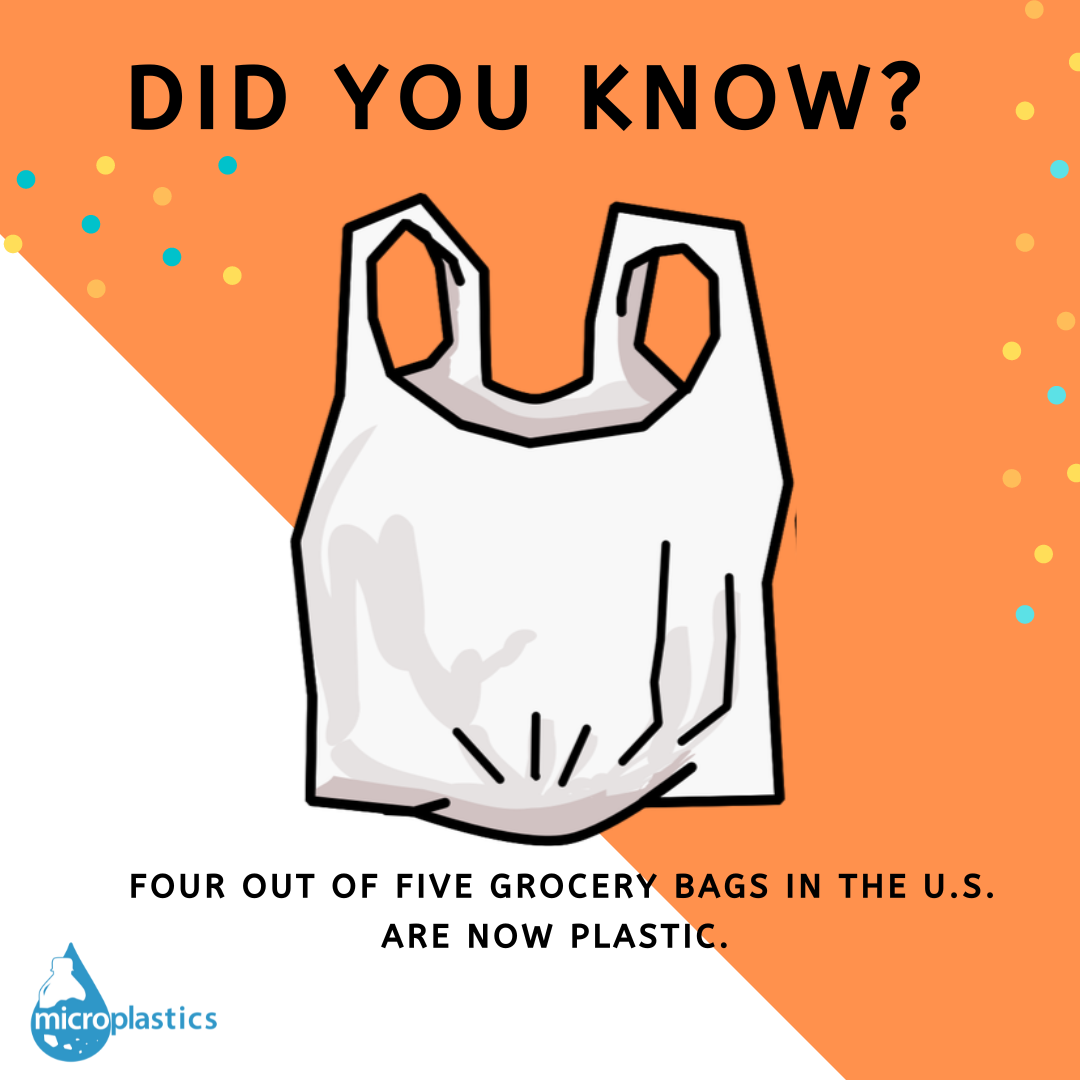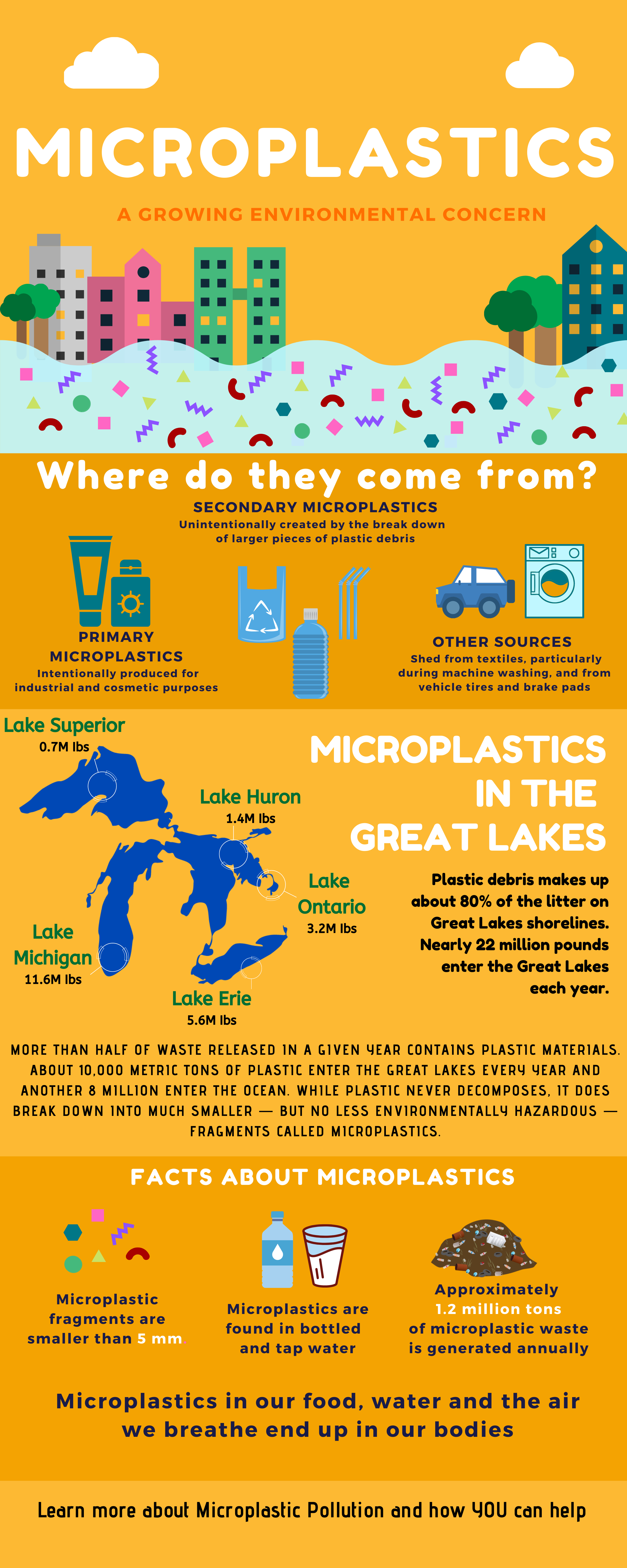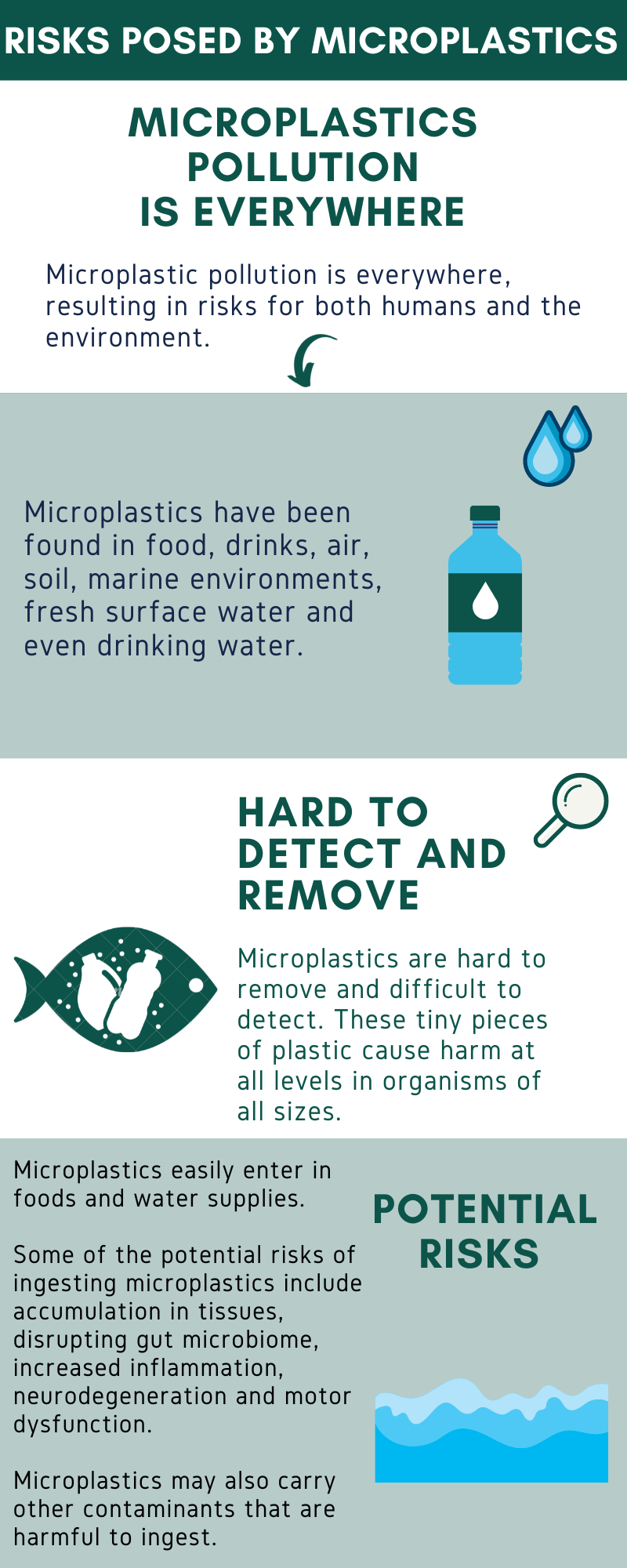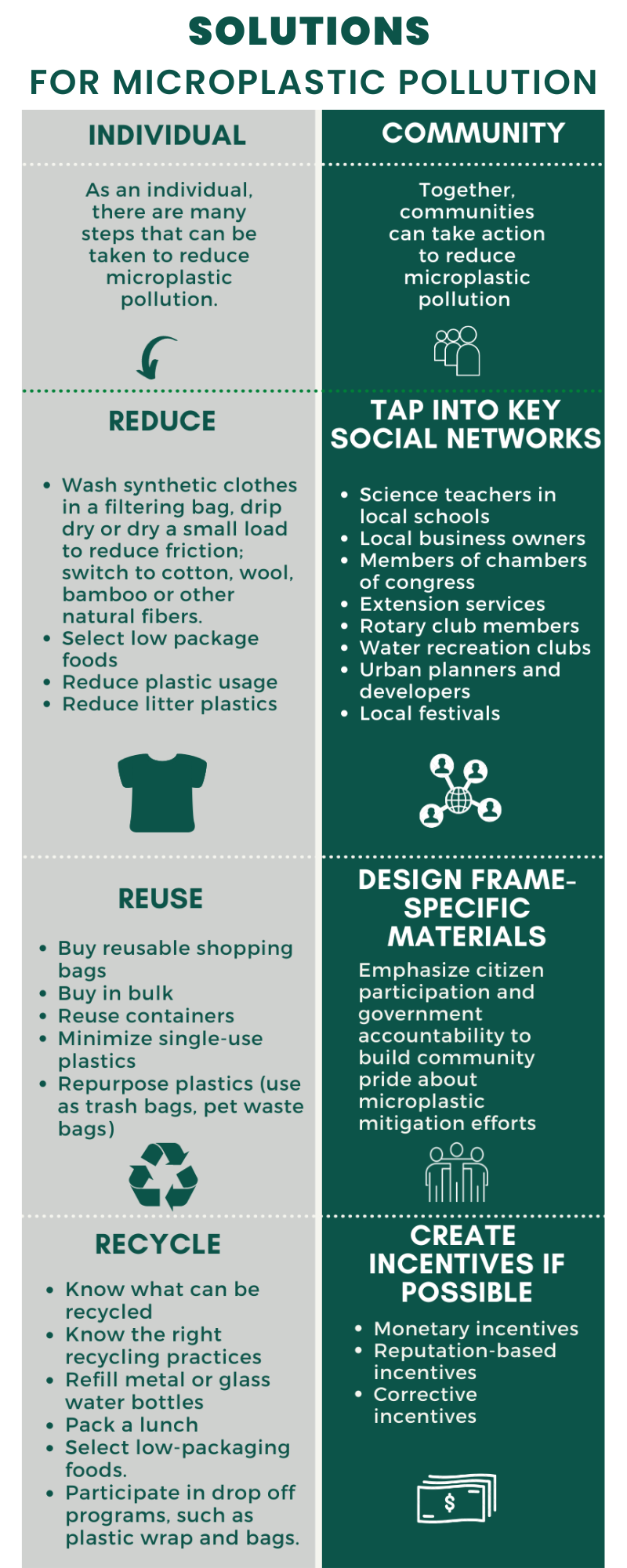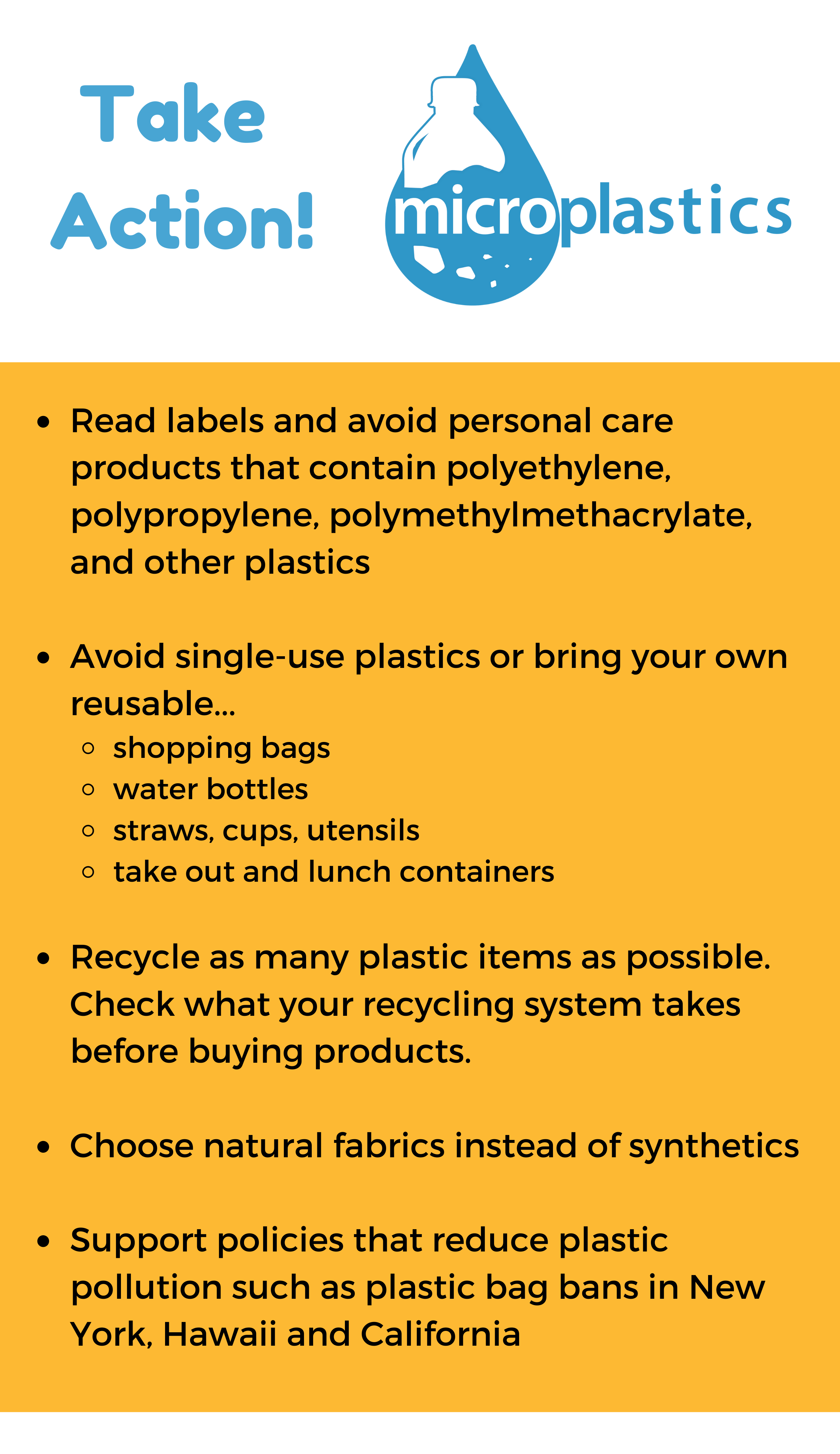Community outreach materials
Fact sheets
- How community leaders perceive the risks of microplastics pollution (print only)
- Community engagement summary and lessons learned (print only)
Graphics
External link to Download Bring it from HOMES logos
Bring It From HOMES” is a campaign rallying the great folks of the Great Lakes – Huron, Ontario, Michigan, Erie, and Superior – to join forces in reducing single-use plastic waste by refilling their own reusable water bottles. Download the logo and share how you will REUSE, REFILL, REDUCE!
Infographics
Where do microplastics come from?
- Primary - Intentionally produced for industrial and cosmetic purposes
- Secondary - Unintentionally create by the breakdown of larger pieces of plastic debris
- Other - Shed from textiles particularly during machine washing, vehicle tires and break pads.
Risks posed by microplastics
Microplastic pollution is everywhere, resulting in risks for both humans and the environment. Microplastics have been found in
- Food
- Drinks
- Air
- Soil
- Marine enviroments
- Fresh surface water
- Drinking water
Microplastics are hard to remove and difficult to detect. These tiny pieces of plastic cause alarm at all levels in organisms of all sizes.
There are potential risks including:
- Accumlation in tissues
- Disrupting gut microbiome
- Increased inflammation
- Neurodegeneration
- Motor dysfunction
Solutions for microplastic pollution
As an individual, there are many steps that can be taken to reduce microplastic pollution:
- Reduce the use of synthetic clothes, high-package foods, and plastic.
- Reuse containers, repurpose plastics, and buy reusable shopping bags.
- Recycle and know best recycling practices.
Together communities can take action to reduce microplastic pollution:
- Tap into key social networks.
- Design frame-specific materials to emphasize participation and accountability.
- Create monetary, reputation-based, and corrective incentives if possible.
Take action!
-
Read labels and avoid personal care products that contain:
- Polyethylene
- Polypropylene
- Polymethylmethacrylate
-
Avoid single-use plastics or bring your own reusable:
- Shopping bags
- Water bottles
- Straws, cups, utensils
- Take out and lunch containers
- Recycle as many plastic items as possible. Check what your recycling system takes before buying products.
- Choose natural fabrics instead of synthetic ones
- Support policies that reduce plastic pollution such as plastic bag bans in New York, Hawaii and California.
Pledges
Slideshows
- Microplastic and nanoplastic pollution: From sources to solutions (print only)
- Classroom microplastic activity (print only)
